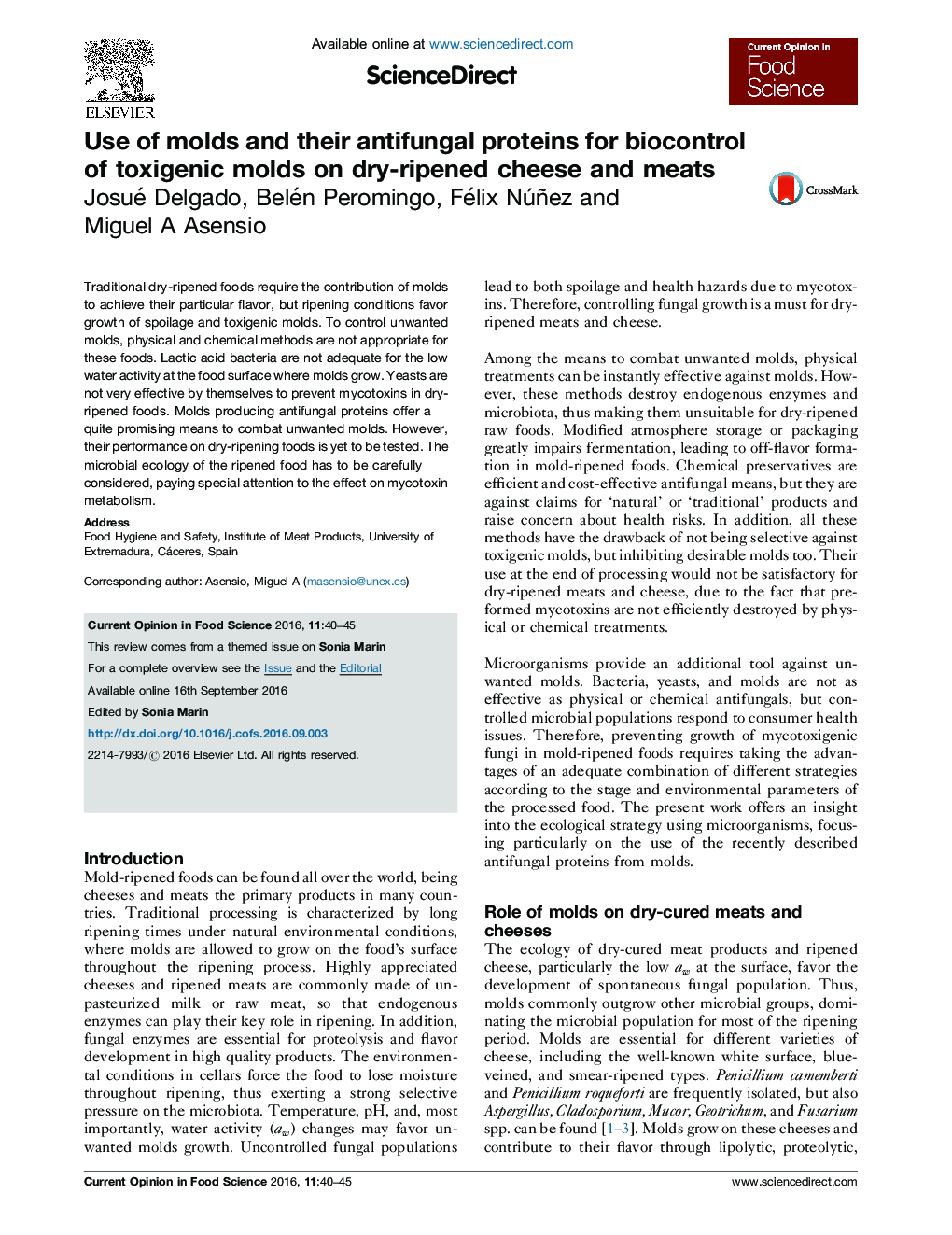| Article ID | Journal | Published Year | Pages | File Type |
|---|---|---|---|---|
| 8409339 | Current Opinion in Food Science | 2016 | 6 Pages |
Abstract
Traditional dry-ripened foods require the contribution of molds to achieve their particular flavor, but ripening conditions favor growth of spoilage and toxigenic molds. To control unwanted molds, physical and chemical methods are not appropriate for these foods. Lactic acid bacteria are not adequate for the low water activity at the food surface where molds grow. Yeasts are not very effective by themselves to prevent mycotoxins in dry-ripened foods. Molds producing antifungal proteins offer a quite promising means to combat unwanted molds. However, their performance on dry-ripening foods is yet to be tested. The microbial ecology of the ripened food has to be carefully considered, paying special attention to the effect on mycotoxin metabolism.
Related Topics
Life Sciences
Agricultural and Biological Sciences
Food Science
Authors
Josué Delgado, Belén Peromingo, Félix Núñez, Miguel A Asensio,
